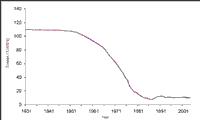|

|  |
 |
Godzone
to Gonezone?
Kahawai Challenge team
October
2008
|
Kahawai
Legal Challenge Update New Zealand Fishing News
November
2008 edition |
|
| |
|
|
| |
| Living
in ‘Godzone’ has many advantages: one of which
is the common law right to go down to the sea and catch
fish.
Justice Harrison confirmed every New Zealander’s right
to fish in March 2007. The High Court described this right
as being particularly valuable because of our proximity
to the sea and our temperate climate.
It is one thing to have that right and another to be able
to exercise it with some measure of success.
When
a 74-year-old writes a letter saying he does not fish anymore
because he rarely catches enough to feed his whanau, you
have to wonder if we have moved from ‘Godzone’
to ‘Gonezone’.
|
| |
Many people
are surprised, even horrified, to learn that most of our
important fisheries are allowed to be fished down to achieve
a stock level (or biomass) around 20 to 25 percent of
its original size.
This biomass is considered sufficient
to produce the maximum sustainable yield.
In theory, and according to computer models, this target
is achieveable.It allows around 80 percent of the fish
to be
|

(North
Island west coast snapper population model)
|
taken from the stock without having an impact on sustainability.
In
practice, this exploitive approach has impacted on the public’s
right to go and catch a feed of fish.
In
many instances the scientists and managers have got it wrong
and reduced our fisheries to mere scraps of their virgin,
unfished size.
Orange
roughy, hoki, snapper, gurnard and kahawai are recent examples
of this ‘throw the dart at the dartboard’ type
management. |
| |
Can
we afford to be so brutal with our natural resources? |
| |
| Optimum
yield
Some
overseas fisheries jurisdisctions have realised the shortcomings
of maximum yield and now use other measures such as optimum
yield.
Managing
fisheries at 40 to 50 percent of original levels enables
wider consideration of people’s social and cultural
needs in addition to the financial returns of commercial
fishing.
In New Zealand successive governments have allowed the slaughter
to continue in the pursuit of monetary gain.
Despite provisions within the Fisheries Act 1996 to apply
precautionary measures if information is uncertain, the
adversarial approach taken to fisheries management usually
ensures that those with the most resources generally win
the arguments. A litany of court cases is proof of that. |
|
Supreme
Court proceedings
The
application made to the Supreme Court for leave to appeal
parts of the Court of Appeal’s kahawai decision
is vitally important for future fisheries management.
Section 8 of the Act defines the purpose as being “to
provide for the utilisation of fisheries resources while
ensuring sustainability”.
Sustainability means maintaining fisheries for future
generations and protecting the environment, while utilisation
encompasses conserving, using, enhancing and developing
fisheries to “enable people to provide for their
social, economic and cultural wellbeing”.
The key question in the application for leave to appeal
is how the words "enable people to provide for their
social, economic, and cultural well-being" are to
apply to the exercise of the Minister's discretion when
making decisions to allow for recreational fishing interests.
All recreational fishing groups supporting the appeal
agree that it is important to get this aspect of the law
clarified, which was a key part of the earlier High Court
decision.
The leave of the Supreme Court must be obtained in order
for the appeal to continue.
The
Crown and commercial fishers have opposed the application
for leave. It is now up to the Supreme Court to decide
if they will grant the application for leave.
|
| |
Outcome
The
Kahawai Challenge team are grateful for the ongoing support from
New Zealand Fishing
News readers.
If you value your
fishing please assist the team by:
-
-
Dialling 0900 KAHAWAI (0900 52 42 92) to automatically donate
$20 via your phone account
-
Contacting Trish Rea on 0800 KAHAWAI (0800 52 42 92) for larger
amounts.
-
Cheques
to the ‘Kahawai Challenge Fund’ can be sent to New
Zealand Fishing News, PO Box 12-965, Penrose, Auckland.
|
|



